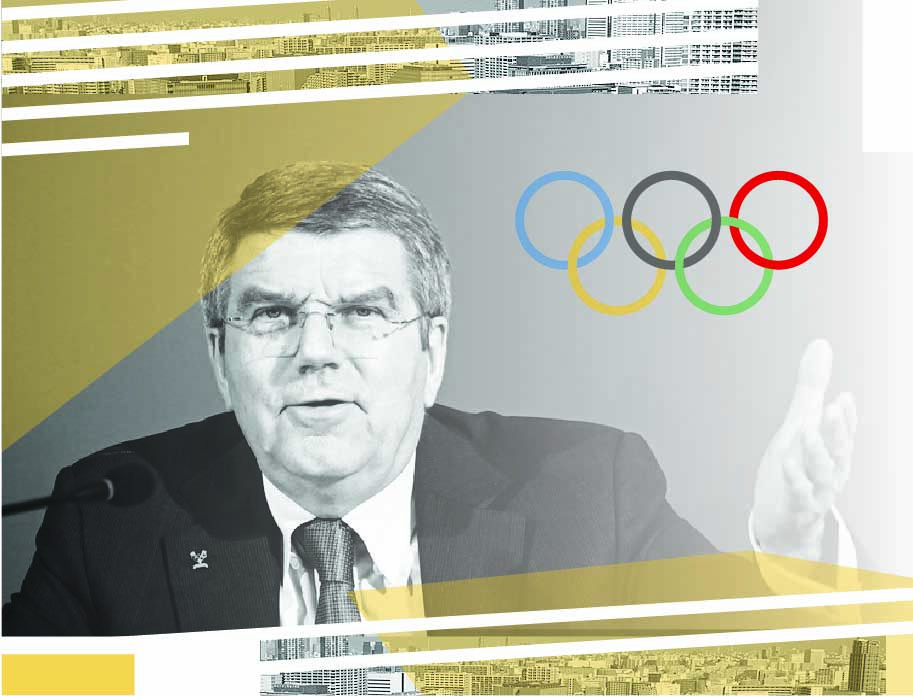
Prof Toni Bruce
Professor of sport sociology and sports media at the University of Auckland. She is a regular columnist and research source for journalists. She recently published a global synthesis of gendered patterns of sports media coverage in Sex Roles and a sports media novel, Terra Ludus.

Section 2: Media Coverage & Representation
- Twitter conversations on Indian female athletes in Tokyo
- ”Unity in Diversity” – The varying media representations of female Olympic athletes
- The Olympic Channel: insights on its distinctive role in Tokyo 2020
- How do we truly interpret the Tokyo Olympic ratings?
- Between sexualization and de-sexualization: the representation of female athletes in Tokyo 2020
- Reshaping the Olympics media coverage through innovation
- An Olympic utopia: separating politics and sport. Primary notes after analyzing the opening ceremony media coverage of mainstream Spanish sport newspapers
- What place is this? Tokyo’s made-for-television Olympics
- The paradox of the parade of nations: A South Korean network’s coverage of the opening ceremony at the 2020 Tokyo Olympics
- Tokyo 2021: the TV Olympics
- Why we need to see the “ugly” in women’s sports
- “The gender-equal games” vs “The IOC is failing black women”: narratives of progress and failure of the 2020 Tokyo Olympics
- Ghana: Poor local organizing, and absence of football team dampens interest
- Megan Rapinoe: The scary Bear for many Americans?
- ‘A Games like no other’: The demise of FTA live Olympic sport?
- Temporality of emotionalizing athletes
- Fandom and digital media during the Tokyo 2020 Olympic Games: A Brazilian perspective using @TimeBrasil Twitter data
- Media wins medal for coverage of athletes as people, instead of entertainers
- Media frames and the ‘humanity’ of athletes
- Reporting at a distance. Stricter working conditions and demands on sports journalists during the Olympics
- New Olympic sports: the mediatization of action sports through the Olympic Games 2020 Tokyo
- Simone Biles, journalistic authority, and the ideology of sports news
- Representations of gender in the live broadcast of the Tokyo Olympics
- Americans on ideological left more engaged in Summer Olympics
- Nigeria: Olympic Games a mystery for rural dwellers in Lagos
- National hierarchy in Israeli Olympic discourses
- Equestrian sports in media through hundred Olympic years. A roundtrip from focus to shade and back again?
- Reshaping the superhuman to the super ordinary: The Tokyo Paralympics in Australian broadcasting media
- Is the Paralympic Games a second-class event?
- The fleeting nature of an Olympic meme: Virality and IOC TV rights
- Tokyo 2020: A look through the screen of Brazilian television
- Is the Paralympic Games a second-class event?
- How digital content creators are shaping meanings about world class para-athletes
- How digital content creators are shaping meanings about world class para-athletes
- The male and female sports journalists divide on the Twittersphere during Tokyo 2020
- Super heroes among us: A brief discussion of using the superhero genre to promote Paralympic Games and athletes
- “Everything seemed very complicated”: Journalist experiences of covering the Tokyo 2020 Paralympic Games
- Representing high performance: Brazilian sports journalists and mass communication professionals discuss their philosophies on producing progressive Paralympic coverage
The Paralympic Games are increasingly a good news story for women’s sport. Female athletes receive significant attention, and the Tokyo 2020 Paralympic Games were no exception. Seven gendered findings emerged from my preliminary analysis of Tokyo 2020 media coverage.
First, the growing media and public interest is positive for women’s sport. The shift of news coverage from print to online has expanded the number of stories, creating more visibility. New Zealand coverage has increased from only 11 images in 2004, to 31 images in 2008, to 148 in 2012. Since then, my analysis of the thumbnails that promote online stories in just one major digital news outlet identified an increase from 128 images in 2016 to 158 during Tokyo 2020. Increased live coverage also puts female athletes in front of audiences and builds recognition. Tokyo 2020 was broadcast live and free-to-air for 13 hours a day on one channel—a notable improvement on Sydney 2000’s limited two-hour daily highlights package. When swimmer Sophie Pascoe—competing in her fourth Paralympic Games and a multiple world champion—became New Zealand’s most successful Paralympian ever, her achievement attracted a Facebook shout out from the nation’s Prime Minister, Jacinda Ardern.
Second, sportswomen dominated coverage. They were far more visible than sportsmen, featuring in 65% of photographs promoting Paralympics stories. Men were the focus of less than 30% of photographs, and a small percentage highlighted mixed gender groups. This finding reflects longitudinal growth and increasing acceptance of sportswomen as ‘real’ athletes who are worthy of attention, from 18% of images in 2004, to 33% in 2008, to 65% during Tokyo 2020. This growth has also generated commentary that focuses on sportswomen’s achievements including world and Paralympic records, previous medals and highest placings, as well as their skills, strengths and medal expectations.
Third is the consistent, bifurcated, emphasis on home-nation athletes which tells audiences that our sportswomen matter but their women do not. This pattern continued at Tokyo 2020, with New Zealanders being the main focus of 85% of Paralympic coverage. However, although nationalism plays a vital role in which athletes attract attention, the intensity of that focus is greater for sportswomen. During Tokyo 2020, 95% of female coverage focused on Kiwi sportswomen compared with 78% on Kiwi sportsmen.
Fourth is the strong alignment of coverage with success: 53% of images of New Zealand athletes highlighted those who won medals. Futher, the seven athletes who gained the most coverage all won medals. Sportswomen dominated because they won 10 of New Zealand’s 12 medals. All the remaining athletes who received coverage made at least one final, except for the men’s wheelchair rugby team, who warranted attention as the first rugby team to qualify for the Paralympics since 2008.
Fifth is how much the importance of winning is still gendered. To gain media attention sportswomen need to win. I previously identified this pattern in Olympic and everyday media coverage but it seems especially relevant for Paralympic sportswomen. For example, in 2004, when Kiwi sportswomen won no medals, they received no photographs and their results were buried at the bottom of other articles. In 2008, when they dominated the medal count, the focus on female medallists was 80%. It rose even higher in Tokyo 2020, with 87% of female images featuring medallists. In stark contrast, a medal focus was only evident in 20% of images of men in Tokyo 2020, whether they were New Zealanders or not. This finding suggests that sportsmen matter no matter what they do, but sportswomen matter primarily if they can be represented as successful national citizens rather than as female athletes.
Sixth is commentators’ discomfort with the word woman. Many were comfortable using ‘man’ to describe male athletes but the use of ‘woman’ proved more challenging, leading to statements like “the lady in the middle has won the gold”, ”that lady’s among them again” or “the lady on the right”. One male commentator frequently introduced male swimmers as “the man who”… “is a gold medallist”, “went fastest” or “set that record”. In an entire evening swimming session filled with introductions to men not a single woman was introduced.
Finally, the expression of emotions was highly gendered. Tears were almost expected of winning sportswomen—“and the tears tell a story” or “Sophie Pascoe breaks down in tears”. In contrast, male tears needed to be justified, as in the male commentator who explained “the tears are flowing—quite rightly so—a bronze medal and a lifetime best”. Smiles seemed to be the domain of women: 95% of images of smiling athletes were women, although this may partly reflect success, as many smiling images featured Kiwi sportswomen on the medal podium or immediately after a medal-winning performance.
Overall, like the Olympic Games, Tokyo 2020 gets a tick of approval but there are still some areas where gender infuses media coverage in inequitable ways. I look forward to a time when sportswomen are valued and visible, whether they win or not.

